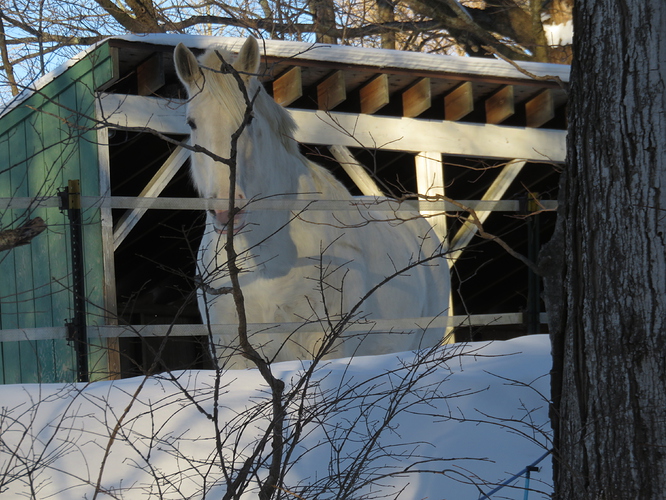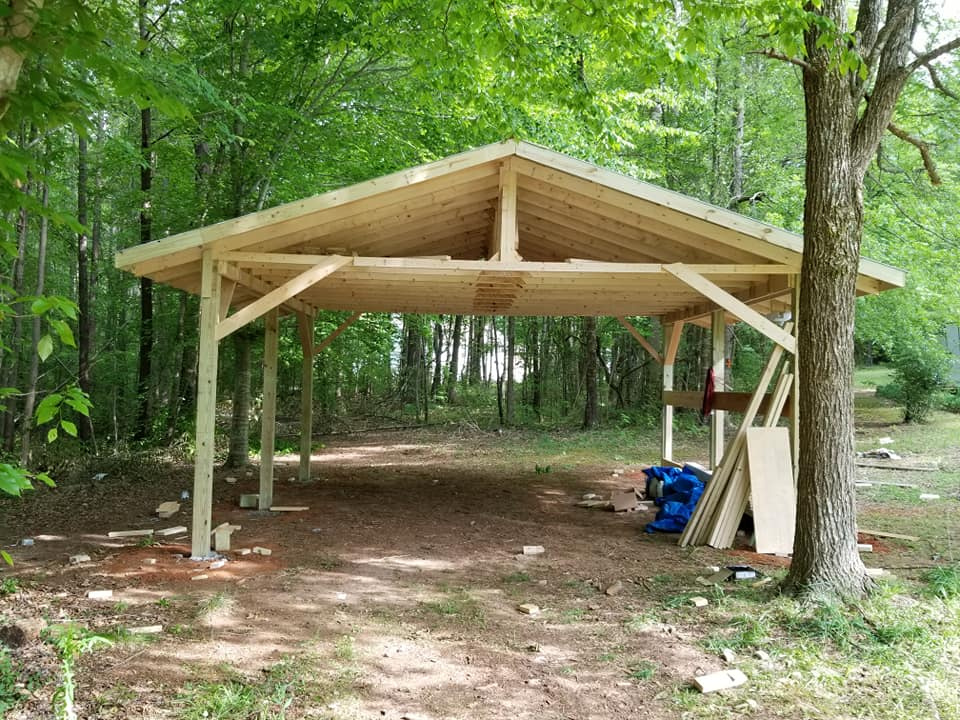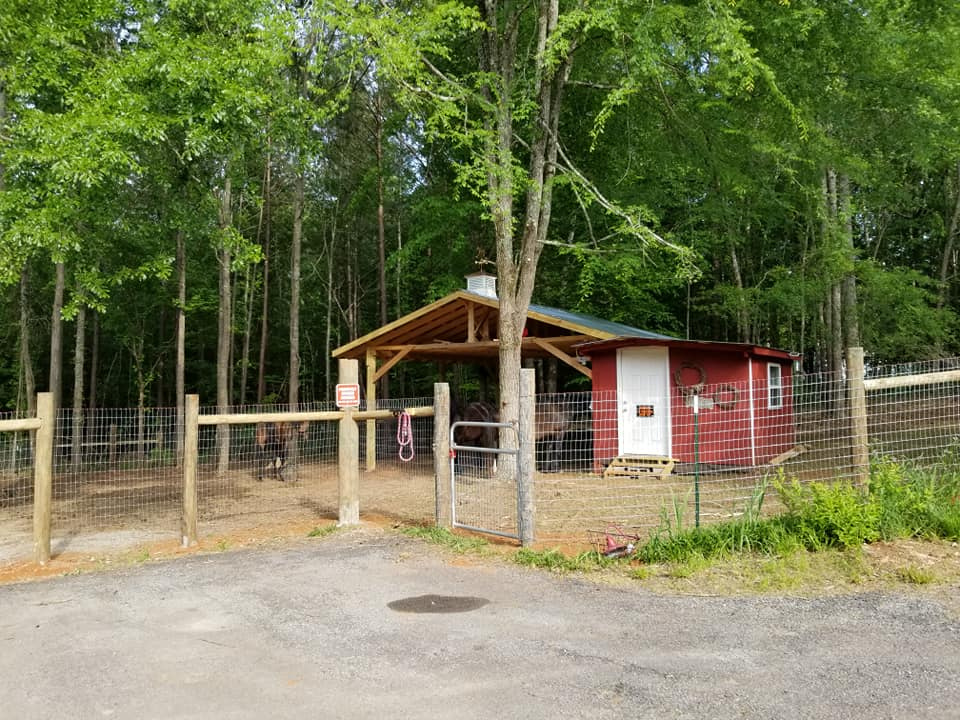We’re moving to our new farm in a few weeks and I will need to convert one or two outbuildings into horse shelters. I would love to see your ideas. Especially those of you that live in colder climates.
This may not answer ur question, but we looked into building 3 sided run in sheds. We found materials plus labor to be very close to what we could buy a pre made run in shed including delivery. But we live in a community of Amish so run in sheds are manufactured here by many backyard builders.
This is the only recent picture I have…sorry for the large white photobomber!
We have had this shed since 1991. Technically, it qualifies as a ‘temporary’ structure Lol! As it has no foundation.
It is built with 16" on center 2x4s, marine grade plywood walls, on ground sills. The roof and walls are overdesigned for the snow load, which is a good thing. Snow load is absolutely your most important calculation if you want it to last!! The front is supported by four posts which go down to horizontal x’s as feet, also wood. When we got the white photobomber, I added stability by putting on a front groundsill, so that horses rubbing on the post couldn’t push them off as easily. It had lasted for 20 plus years without that.
It is about 13’ deep, 8.5’ high at the back, and 30’ long. What would I change? I would make it deeper, or add a front overhang to it.
It faces south, I wish it faced southeast. It is raised above the grade of the dry lot by quite a bit. Stone dust floor.
Thanks for the inputs! We have some buildings to work with, but overhangs really make it easier. I’m wondering if we should spread rock in front as well as inside the shed because of runoff. I typically use a pressure treated 2X6 at the entrance to kind of hold the rock in. It doesn’t last forever, but maybe it helps?
One of the buildings is deep, but only about 12 feet wide. Our horses get along, but I can see one hogging the hay and not letting the other in.
Again my circumstance is slightly different --I had extra stall mats so I put them directly in front of the run in shed that seemed to get “deep mud” in front (it’s in a wooded area of the pasture). That keeps the horses from sinking --however, all my sheds are built to be moved --on skids --one just hooks up the tractor and drags to a different location every year or couple of years. The big shed can be jacked up and have wheels put on it (manufactured home frame -steel) --we never do that --just lift it out a bit with the loader and give it a pull. The smaller sheds in sunny parts of the pasture, just get moved.
That’s a neat idea! The outbuildings are permanent, but if we add one, having it on skids, vice a pole barn, certainly has advantages.
That’s really nice. The weathervane is a nice touch.
Runoff and water is going to be the thing to manage. Snowmelt and mud are a challenge. The reason my shed has lasted so well is because it is built with excellent drainage. It originally was a graded lot with sand, over the years I’ve replaced the sand with stone dust and increased the slope in front and around the sides by grading the rest of the lot down and away even more. It seems steep and high, but it keeps it much drier. A slope is really helpful in mud season, when the ground is still frozen but the top inch or two is not. Rain on frozen ground pools dramatically, unless you have that slope. It sounds like you will be moving at the right time to observe the wettest point of the year, so much easier to fix the drainage before the horses are there!
This is a double run-in (12x24) that I separated into two open stalls with long paddocks. It worked, at the time, but it was because I had one 31 year old mare that needed free choice senior feed and a young horse that was an easy keeper and more dominant. The baby donkey was rescued and then adopted by my mare. The shed had a 4 foot overhang, but it was muddy past that. This was in Virginia.
These are my run-ins. The double run-in is built over the fence between my front two pastures. The smaller run in is in my dry lot and is used as a stall for my horse that has equine asthma and can’t be in the barn or on bedding.
I should probably add that I am in the southeast, so neither of these are built to be warm, although the smaller shelter does have walls on the northeast side. It also has a fan installed. The bigger shelter is strictly to give the horses a place to go in case of a storm.






